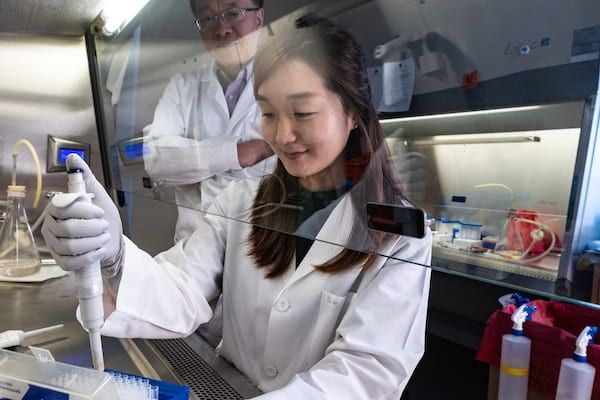Help for patients with sickle cell disease may soon come from gene editing to fix the mutation that causes the disease and boost the patient’s own protective fetal hemoglobin.
New research shows that using CRISPR-Cas9 and a corrective short DNA template to repair the sickle cell mutation in a patient’s hematopoietic stem cells (HSCs) could be efficient and safe.
Bioengineer Gang Bao of Rice University’s Brown School of Engineering conducted the research in collaboration with Texas Children’s Hospital, Baylor College of Medicine and Stanford University. The revelation is one of several in a new study led by Bao and Vivien Sheehan, an assistant professor at Baylor and a member of the sickle cell program at Texas Children’s Hematology Center.
The open-access study appears in the Oxford Academic journal Nucleic Acids Research.
Read more at: Rice University
Rice University graduate student So Hyun Park prepares an experiment in the lab of bioengineer Gang Bao, in the background. The lab is working toward help for patients with sickle cell disease through gene editing. (Credit by Jeff Fitlow)


